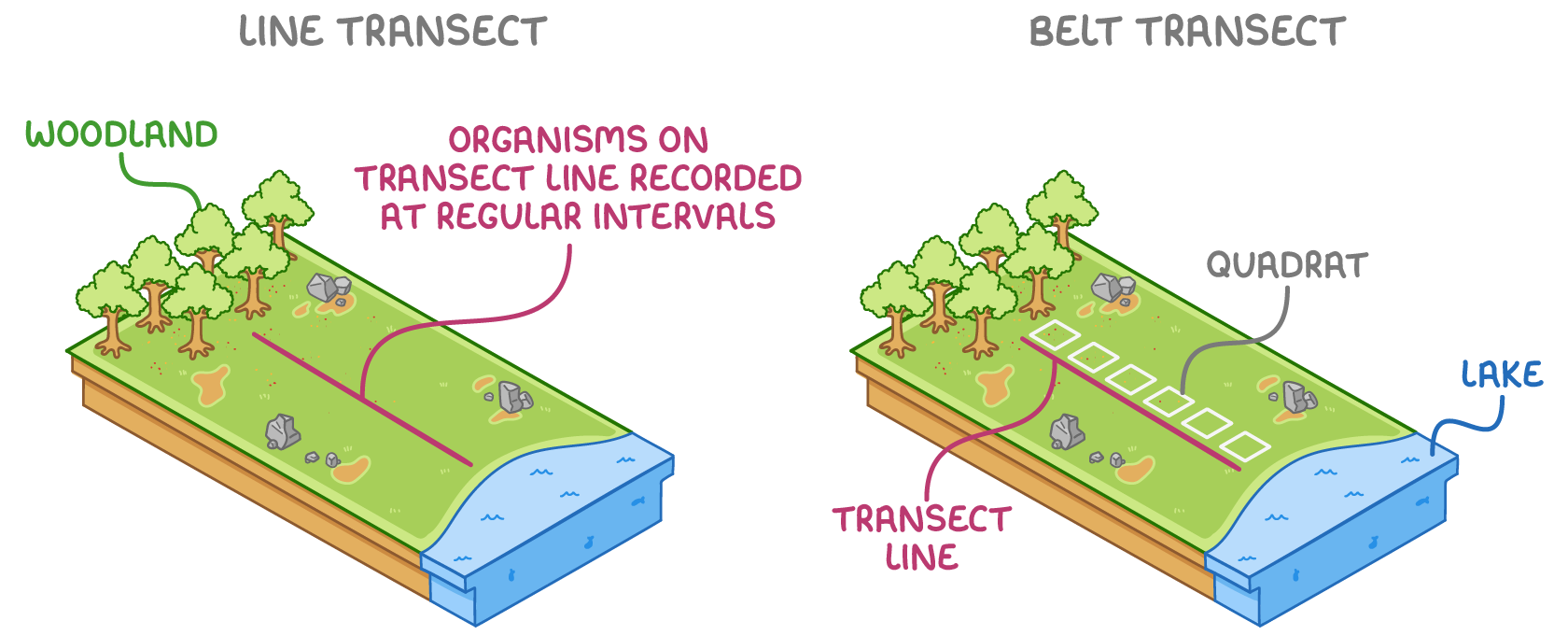Non-random Sampling
This lesson covers:
- Differences between random and non-random sampling
- Types of non-random sampling
- Non-random sampling techniques
- Measuring abiotic factors
Random and non-random sampling
Non-random sampling involves selection based on specific criteria or patterns and the sample is not chosen at random.
Differences between random and non-random sampling:
- Random sampling removes human bias in sample selection, improving reliability.
- Non-random sampling does not use random selection so is prone to bias.
Types of non-random sampling
There are three main types of non-random sampling.
- Opportunistic:
- This uses conveniently available organisms.
- It may not be representative of the population.
- Stratified:
- This divides the population into subgroups (strata) based on a characteristic.
- A random sample is taken from each subgroup/stratum.
- It ensures all strata of the population are represented proportionally in the sample.
- Systematic:
- This samples different areas in a habitat separately at regular intervals to avoid bias.
Line transects and belt transects
Transect sampling is a method of studying the distribution of organisms in a specific area. It is typically used in systematic sampling.
Transect sampling:
- Mark a line (transect).
- Take samples along this line at regular intervals.
This lets us study how species' distributions change across different areas within a habitat, like from a woodland to a lake.

There are two main types of transect sampling:
- Line transect - Samples are taken at regular intervals along a line between two points.
- Belt transect - Samples are taken in an area along a line or between two parallel lines, by using quadrats placed either side by side (continuous) or at regular intervals (interrupted).
Measuring abiotic factors
Abiotic factors directly affect organisms in a habitat so they are useful to measure when sampling.
We can measure abiotic factors like:
- Light, humidity, and temperature (using sensors).
- pH and wind speed (using probes).
- Dissolved oxygen (using specialised probes).
Advantages of measuring abiotic factors:
- They can detect rapid changes.
- They can reduce human error in taking readings.
- They can achieve a high degree of precision
- They allow data to be stored and tracked on a computer.